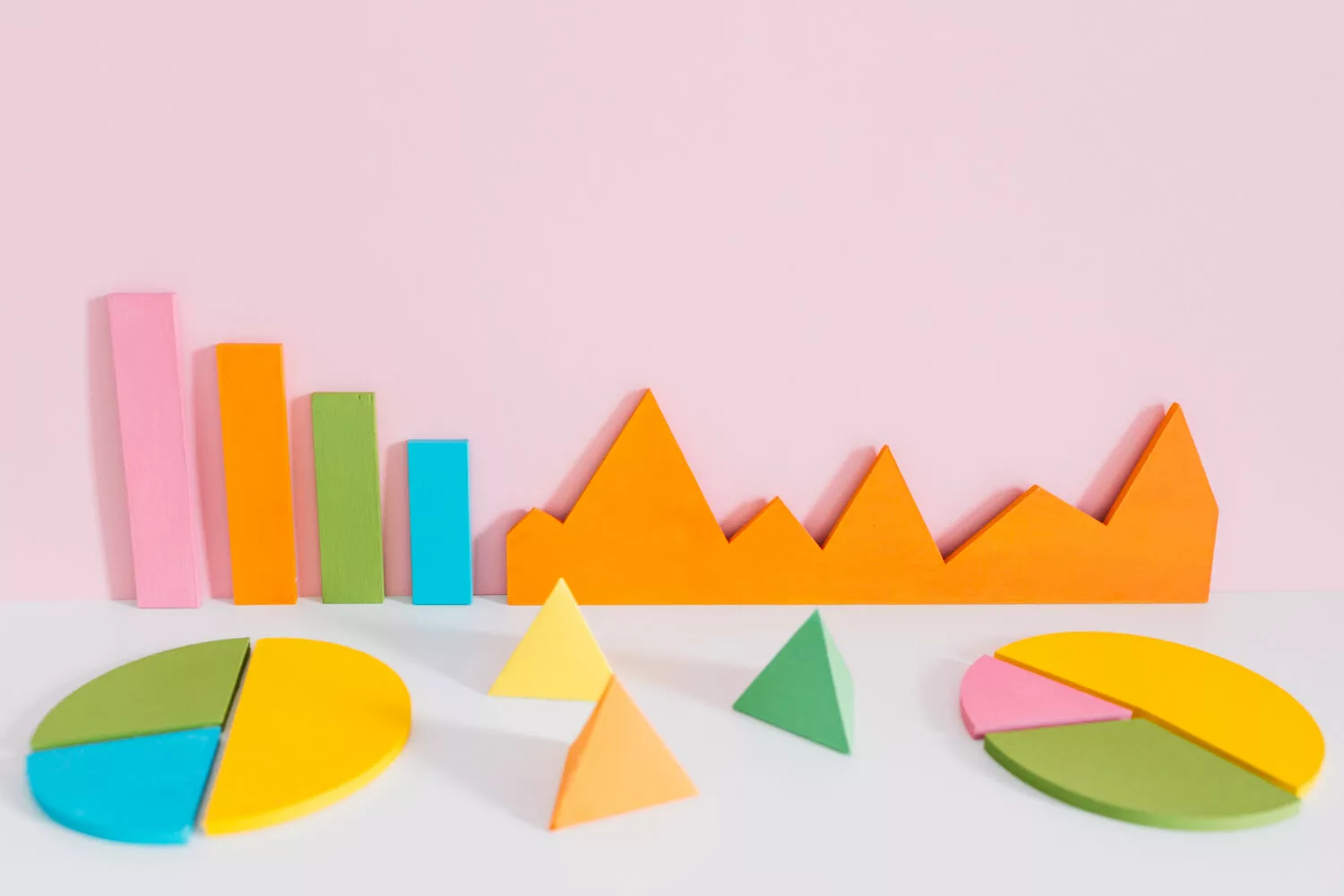To get an understanding of a dataset, find outliers, evaluate the quality of the data, and analyse the data for deeper analysis, descriptive stats are used. They summarise and visualise data from multiple fields, like business, the social sciences, and economics, to help researchers and decision-makers reach more accurate conclusions.
The Main Objectives of Statistics
Numerous crucial tasks in data analysis and decision-making are included in the main goals of statistics.
- First and foremost, statistics strive to properly represent data by offering succinct summaries and visualisations to make it understandable.
- Then, it goes beyond merely describing the data and analyses it, revealing patterns, connections, and trends that might not be immediately obvious.
- To conclude data is a crucial goal. This entails making inferences about a wider population based on sample data, which is crucial for research, marketing, and policy choices.
- Furthermore, by offering evidence-based insights, statistics plays a crucial part in assisting decision-making across a variety of disciplines. It aids in risk reduction, outcome evaluation, and identification of the best techniques.
The foundation of probability theory is statistics, which provides tools for calculating randomness and uncertainty.
Also Read: Maths Puzzles for Grade 2
Key concepts of statistics:
- Data: The information gathered for analysis is referred to here. Quantitative (numerical) or qualitative (categorical) data are also possible.
- Descriptive Statistics: These techniques are used to summarise and characterise data using descriptive statistics. Measures like mean, median, mode, and standard deviation are among them.
- Inferential Statistics: Making predictions or inferences about a population based on a sample is the focus of the field of statistics known as inferential statistics. Confidence intervals and hypothesis testing are two common inferential methods.
- Probability: Since it offers a framework for addressing uncertainty and unpredictability, probability theory is crucial to statistics. It is utilised in decision-making and statistical inference.
- Distributions: Data patterns are described by statistical distributions. The normal distribution, binomial distribution, and Poisson distribution are examples of common distributions.
- Sampling: Statisticians frequently use samples to analyse big populations.
In many domains, including research, policy development, quality assurance, and others, statistics are essential. It enables us to more fully comprehend the world, make predictions, and take defensible actions based on empirical data. Statistics for data analysis is a crucial tool for deriving useful insights from data, whether you’re performing scientific experiments, examining financial data, or researching social patterns.
Descriptive Statistics:
In the statistical field of descriptive statistics, data are summarised and presented clearly and understandably. Its main objective is to present a dataset overview, making it simpler to comprehend the key traits, trends, and properties of the data. The major metrics and methods used in descriptive statistics often include the following:
● Central Tendency Measures
Mean: A dataset’s arithmetic mean.
Median: When data is sorted in either ascending or descending order, the median is the midway value.
Mode: The value that appears the most frequently in the dataset.
● Dispersion measures:
Range: The discrepancy between a dataset’s maximum and minimum values.
Variance: The difference between individual data points and the mean.
Standard Deviation: The square root of variance, which represents how widely distributed the data are from the mean.
● Distribution Shape Metrics:
Skewness: Indicates the asymmetry in the distribution of the data.
A distribution’s “tailedness” or peakiness is measured by kurtosis.
Frequency Distributions: Tables or histograms that show the frequency with which each value or category appears in the dataset are known as frequency distributions.
Percentiles: Data points are frequently compared to a standard scale using percentiles, which are values that divide the data into 100 equally spaced pieces.
Box Plots: Graphical displays of data distribution, including the median, quartiles, and outliers, are called box plots.
Also Read: Tips to Solve Maths Puzzles for Class 4 Students
Collecting, Organising, and Interpreting Data Through Mean, Median, and Mode
We may comprehend the central tendencies and characteristics of a dataset by gathering, organising, and interpreting data using the mean, median, and mode. An outline of each of these steps is given below:
Collecting Data: Data collection involves gathering information through various methods such as surveys, experiments, observations, or by using existing datasets.
It’s essential to ensure that the data collected is representative of the population or phenomenon you’re studying and is accurate.
Organising Data: To make analysis easier, data must be carefully organised after collection.
Categorical data and numerical data are the two basic categories of data that may be distinguished.
You can make frequency tables or charts to display the distribution of categories in categorical data.
Mean: (also known as the average) is calculated by dividing the total number of data points in a dataset by their sum. It offers an indication of core tendency.
Mean is calculated as follows: (Sum of all values) / (Number of values).
Median: When data are sorted in either ascending or descending order, the median is the midway value. It offers a different measure of central tendency and is less susceptible to outliers.
Use: Calculating averages, such as the average test score, salary, or temperature, makes use of the Mean. When data are sorted in either ascending or descending order, the median is the midway value. It offers a different measure of central tendency and is less susceptible to outliers.
Mode: The value that appears the most frequently in the dataset is the mode. A dataset may be unimodal, multimodal, or without any modes at all.
Use: The mode can be used to determine the most prevalent value or category, such as the most popular colour, item, or number.
You can better understand the distribution and properties of data by interpreting data using these measurements. These central tendency statistics for data analysis reveal the most frequent or typical values in the dataset, as well as where the data tends to cluster and whether it is symmetrical or skewed. Making informed decisions and reaching conclusions from the facts gathered need the use of this knowledge.
Also Read: Famous Mathematicians and Their Inventions
Statistics for Data Analysis:
Statistics is a key component of data analysis since it offers the methods and tools required to interpret data, reach conclusions, and aid in decision-making. Using statistics in data analysis looks like this:
- Descriptive statistics assist in enumerating and describing a dataset’s key characteristics. They contain statistics that provide light on the data’s central tendency, variability, and distribution, such as the mean, median, mode, standard deviation, and range. Descriptive statistics is very useful in data analysis.
- Using inferential statistics, it is possible to predict and infer information about a population from a sample of data. This comprises confidence intervals for estimating population parameters and hypothesis testing to assess whether observed changes are statistically significant.
- Regression Analysis: Regression analysis is used to determine how variables are related to one another. While multiple regression can model interactions involving several variables, simple linear regression is used to model relationships between two variables.
- Data Visualisation: Statistics are necessary for the creation of powerful data visualis Data is presented more clearly and understandably using graphs, charts, and plots, which makes it simpler to spot patterns and trends.
- Sampling Methods: In data analysis, statistical methods for choosing representative samples from larger populations are essential. Sampling guarantees that the data you analyse appropriately represents the larger group you are interested in.
Also Read: Why is National Statistics Day celebrated in India?
EuroSchool helps your kids to gain important insights, make educated decisions, and assist scientific research across a wide range of fields, from business and finance to healthcare and social sciences. Statistics, especially descriptive statistics, is an essential part of data analysis.
Statistics are used for quality control, process monitoring, and ensuring that goods satisfy quality requirements in the manufacturing and process industries.











